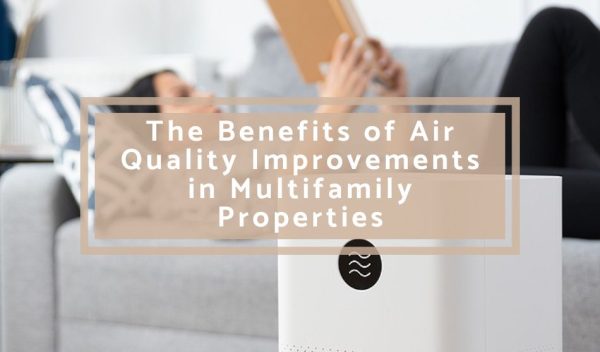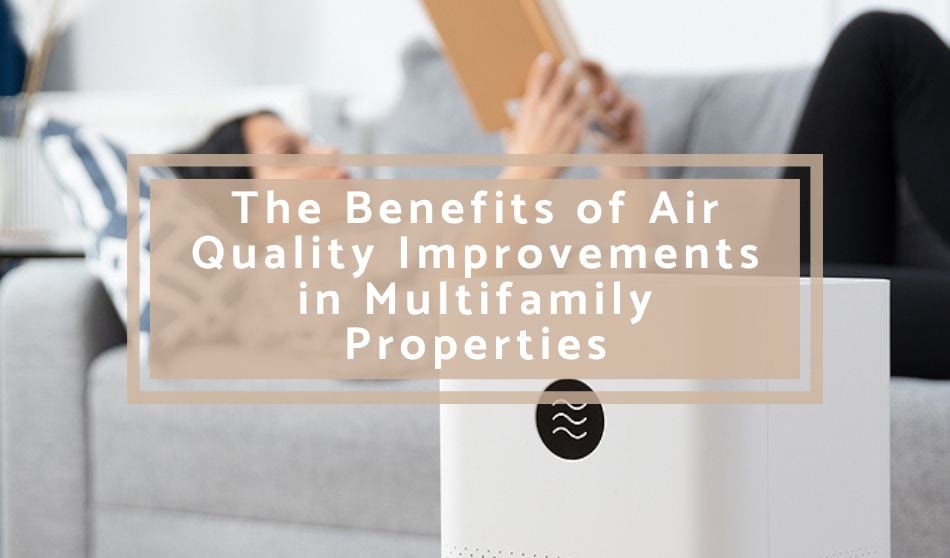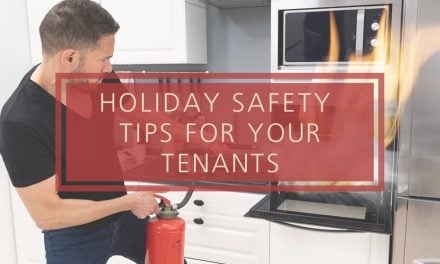
Everyone deserves to live in a home or apartment with clean air. Getting rid of indoor pollutants is hard enough for single-family homes, but it’s even more difficult for large multifamily properties. Explore the benefits of clean air, the purification challenges multifamily properties face, and five viable methods to improve indoor air quality.
Benefits of Better Air Quality
Good air quality is one of the hallmarks of a well-maintained property. Based on the Environmental Protection Agency’s Air Quality Index (AQI), “good” air quality means local air pollution poses little to no risk to people’s health. The AQI measures air pollutant concentrations and bases a building or community’s rating on the health effects of the pollutants.
When a building can maintain good air quality, the residents benefit in many ways:
- Makes breathing easier
- Promotes better sleep habits
- Inhibits the spread of airborne diseases
- Reduces symptoms of allergies and respiratory illnesses
- Lowers stress levels
- Improves cognitive functions and productivity
The property owner will also see long-term financial benefits from proper air quality maintenance. Better air quality leads to greater HVAC energy efficiency and lower utility costs.
Why Air Quality Is Tricky in Multifamily Buildings
Air quality in multifamily properties is challenging to maintain. These structures are more susceptible to indoor air pollutants than other living arrangements for several reasons:
- Urban pollutants: Most big multifamily buildings are in urban areas. Cities are notorious for having poor outdoor air quality due to the high concentration of particulate matter from vehicles, construction projects, heating systems and other sources. When apartment dwellers open their doors and windows, polluted air gets inside.
- Shared boundaries: Air naturally moves to low-pressure areas through small passages inside a building. Since apartments on multifamily properties often share borders, pollutants can quickly spread from room to room.
- Outdated architecture: Many multifamily buildings were constructed before the introduction of indoor air quality standards. The first federal standards started to form during the 1950s with organizations like the American Society of Heating and Air-Conditioning Engineers. Older architecture contains lots of particulate matter and does a poor job of ventilation.
Although these obstacles are working against you, you can still take practical steps to improve your multifamily property’s air quality.
How to Improve Air Quality on Your Multifamily Property
Improving your building’s air quality requires two key components — system upgrades and responsible daily habits. You need to remove indoor pollutants on a macro and micro level to see noticeable changes. These projects should be at the top of your to-do list.
1. Upgrade the HVAC System
First, you need to upgrade your HVAC system. Changing the filter every once in a while isn’t enough. The Department of Energy recommends an HVAC system replacement once every 10–15 years or sooner, depending on the system’s condition. Here are some telltale signs you need to make an upgrade:
- The system makes too much noise.
- The building has excessive dust.
- Some rooms are much warmer or colder than others.
- The air is too dry in the winter or too humid in the summer.
- Energy bills are steadily rising despite the same number of tenants.
New HVAC systems run more quietly, have better climate control and usually have extended warranties that cover all servicing and repairs for years. Use this opportunity to upgrade to an Energy-Star-certified system, which uses 8% less energy than conventional models.
2. Install Air Quality Monitors
Along with a complete system upgrade, you can install monitors throughout your building that track different aspects of indoor air quality. A thermostat is a good start, but you should also include these essential tools:
- CO2 monitors: High levels of carbon dioxide lead to a higher risk of airborne disease transmission in enclosed environments. CO2 monitors will tell you when to open some windows and ramp up the ventilation.
- Carbon monoxide monitors: Carbon monoxide is an odorless, colorless chemical that can be lethal at high doses. These monitors are must-haves in every room. Any detected amounts of carbon monoxide need to get filtered out immediately.
- Radon monitors: Radon is another invisible chemical that increases the risk of lung cancer with radioactive particles. It’s also dangerous for people with asthma and other chronic respiratory illnesses. A radon monitor will help your most vulnerable tenants breathe easier.
- Particulate monitors: These unique monitors tell you when the air is full of dust and other heavy particles. This function benefits multifamily properties because of how much polluted urban air gets inside.
It’s impossible to track all these monitors by yourself, so you must get your tenants involved. Educate them about each monitor’s function and stress the importance of proper maintenance. Remember that some of these monitors will be legally required in your building, depending on your local regulations. Your or your management team will be responsible for ensuring that they are in compliance and working order.
3. Switch to Low-VOC Flooring
Flooring plays a crucial role in indoor air quality. Carpets are ideal environments for countless air pollutants because they trap particulate matter. You should remove as much carpeting in your building as possible, especially in communal areas like the lobby. Hard surfaces such as stone, hardwood, and vinyl flooring are cleaner, better options.
Whichever material you choose, ensure it has a low amount of volatile organic compounds (VOCs). Environmental organizations like the Green Building Council, Greenguard, and the Green Building for Healthcare Council can run ongoing tests on your flooring materials. These tests evaluate more than 10,000 potential contaminants and limit the presence of 365 VOCs.
4. Add More Greenery
Plants are incredibly effective natural air purifiers. They filter carbon dioxide from the air, making it much more breathable. Putting a handful of houseplants in each apartment unit will improve the building’s air quality. Some of the best air-purifying plants include spider plants, dracaenas, and chrysanthemums.
5. Provide Portable Air Purifiers
You can also provide artificial air purifiers for each room or unit. Portable ones are perfect for small apartment units. They use a combination of several filters — including carbon, HEPA, and ionic technology — to remove pollutants and foul odors from the room. The purifiers can fit comfortably in the corner of each tenant’s living room or bedroom, helping them reap the health benefits of clean indoor air.
Give Your Tenants the Clean Air They Deserve
Multifamily properties are challenging to keep clean, especially regarding air quality. Several significant factors are working against you, including the building itself. However, that’s no excuse for providing substandard living conditions. Put these five air purification strategies into action and give your tenants the clean air they deserve.





